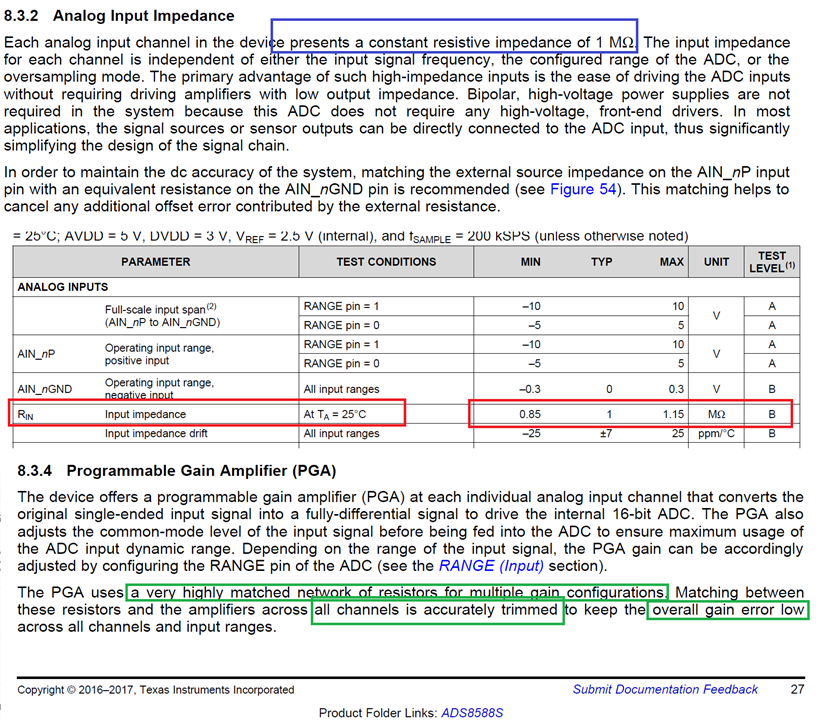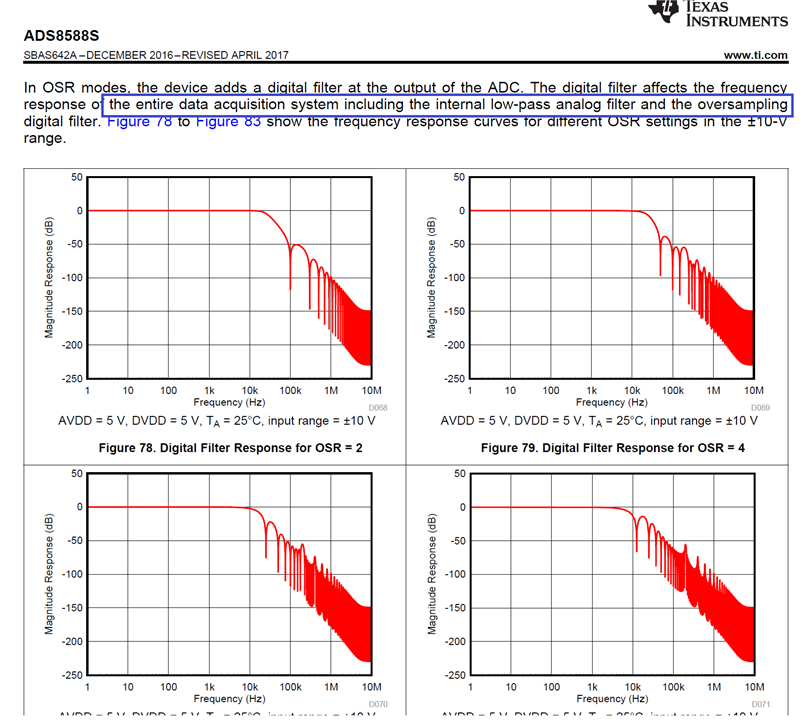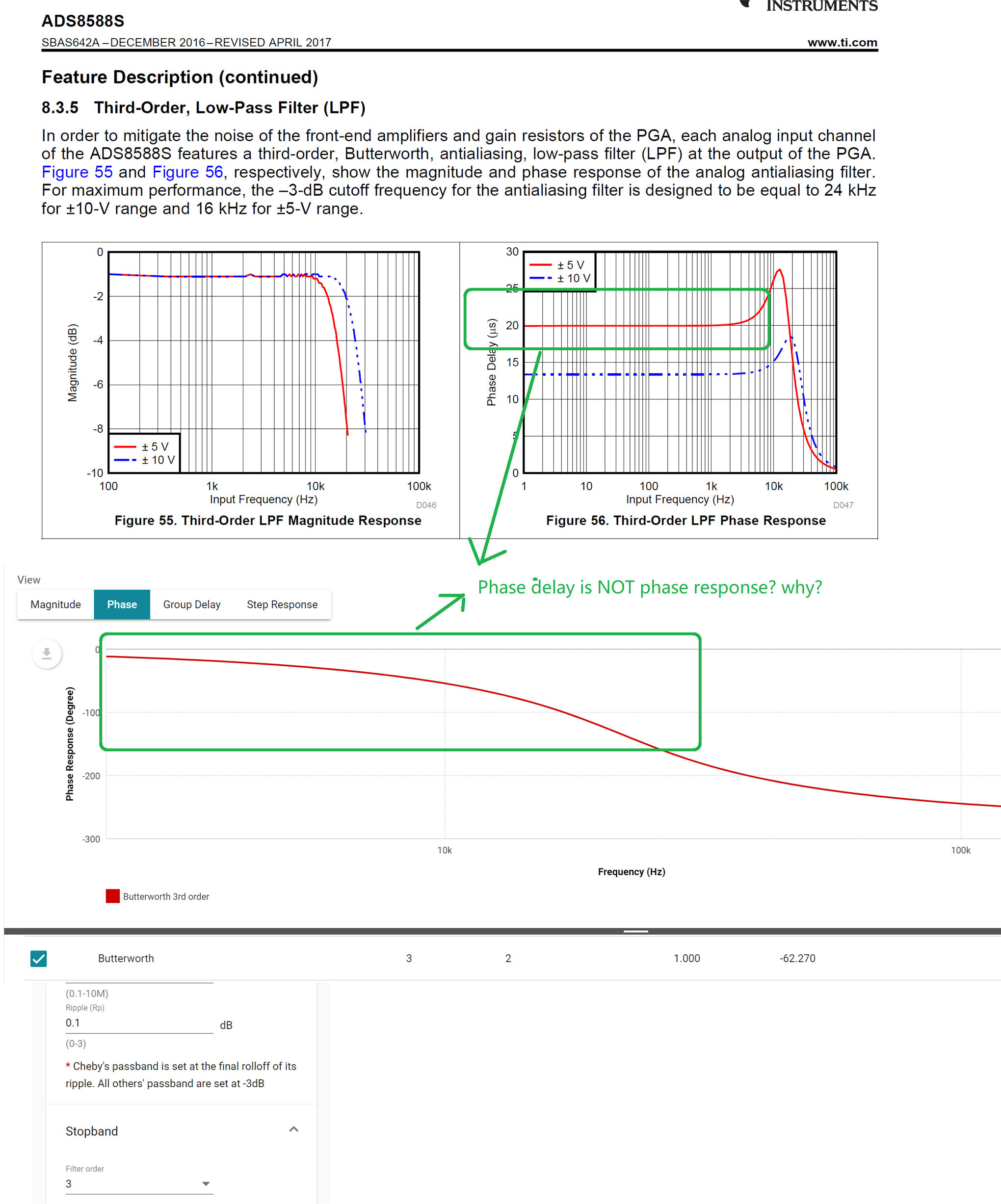Hi Gent.,
I'm evaluating one DAS design based on ADS8588S, now I have few questions, could you please help on clarifiing them? thanks.
1. For the input impedance descriped in d/s, this is important as it could introduce system gain error. the spec. said input impedance has +/-15% vairsion around 1Mohms, but the PGA/input impedance section also said this input impedance is one stable and trimmed to match the system gain error. So my quesion is that Rin impedance is accurate or not? if NOT, I need compenste this error in my system design, correct? if the Rin is trimmed inside chip, how about the accuracy and its temperature drift? btw, how about PGA's feedback resistor accuracy?
2. For the "Third-Order, Low-Pass Filter (LPF)", can I disable it if I don't need it? also, if can I set this as second-order Low pass filter and fine tune the 3db bandwidth? it sounds the phase delay has a little longer for me for this 3rd-order LPF inside.
3. For OS operation mode, how to understand " The digital filter affects the frequency response of the entire data acquisition system including the internal low-pass analog filter and the oversampling digital filter."? as I understand, the LPF is independent on the oversampling digital filter, so how this digital filter would impact the frequency response of both LPF and digital filter from oversampling (averaging digital filger)?
thanks for clarifying my confusion.
Regards,
Feng



